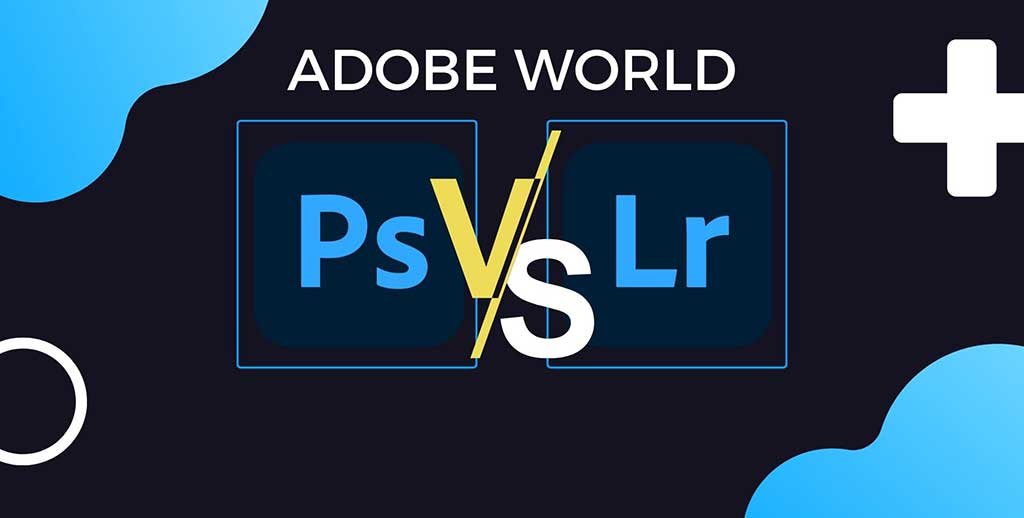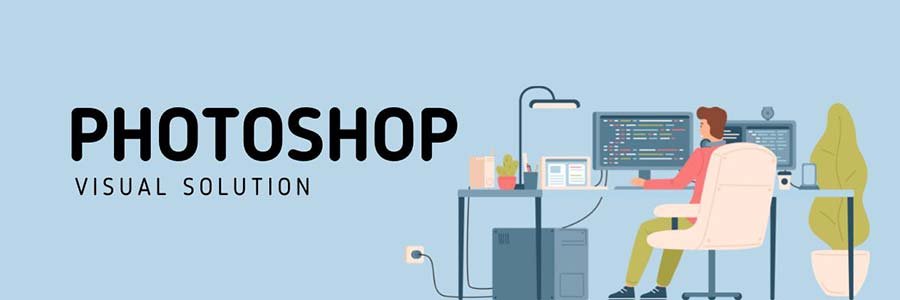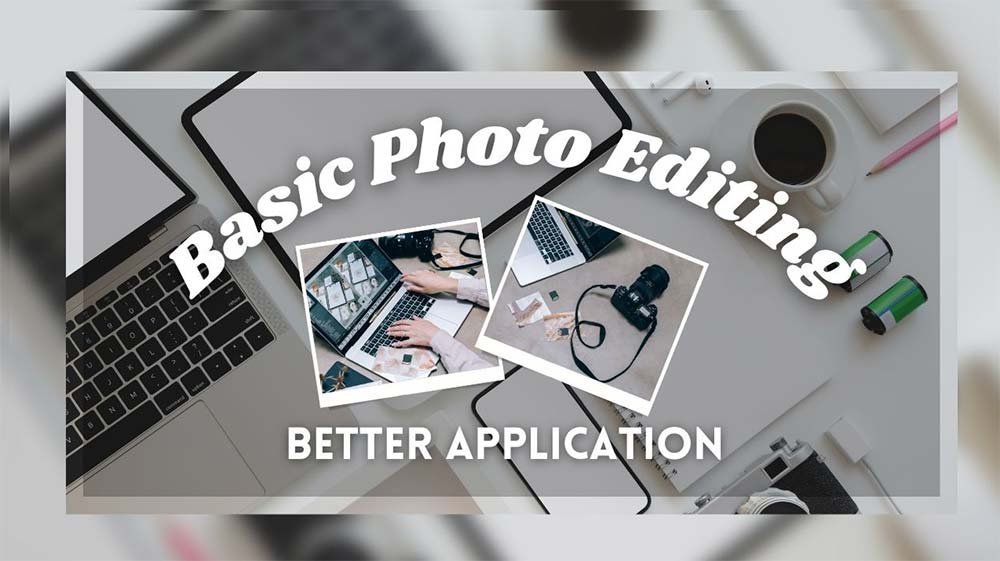
If you are new to the world of photoshopping or editing processing software, you will come across plenty of useful software that will give you all the tools you need to edit and tune the picture you see fit.
Out of many image editing software available in the market, adobe is the only brand that has been dominating the editing field for a long time. The line of software for image editing they have for photo and video editing is far superior compared to the alternatives. The valuable tools and more straightforward UX design help newcomers use the software through a few steps.

The simple layout of adobe software can be very intriguing for newcomers who don't want to handle software with a huge learning curve at the initial stage. Adobe software provides a well-balanced tone to the software.
If you have never used photo editing software before, you will get into adobe software very quickly. Simultaneously, adobe software also offers complex design tools to make your photo look very professional. The sheer number of options has made adobe a well-established brand today.
Out of many image editing software available in the market, adobe is the only brand that has been dominating the editing field for a long time. The line of software for image editing they have for photo and video editing is far superior compared to the alternatives. The valuable tools and more straightforward UX design help newcomers use the software through a few steps.
The simple layout of adobe software can be very intriguing for newcomers who don't want to handle software with a huge learning curve at the initial stage. Adobe softwares provide a well-balanced tone to the software.
If you have never used photo editing software before, you will get into adobe software very quickly. Simulations only, adobe software also offers complex design tools to make your photo look very professional. The sheer number of options has made adobe a well-established brand today.
Definition of photoshop and Lightroom

Adobe has two of its mainline software based on photo editing. Any newcomer to the photo editing world can get confused by the softwares as they both allow you to edit photos with various useful tools. Two mainline Adobe software based on photo editing are Lightroom and Photoshop.
You must have come across thousands of forums on adobe photoshop vs. lightroom questions online. This article will go through all the major and minor differences between these two critically acclaimed software available in the market.
What is Lightroom?
Adobe Photoshop lightroom focuses on different aspects of photo editing software than Adobe Photoshop. Some might get confused with the word Photoshop embedded in the lightroom title. You see the Adobe Photoshop Lightroom instead of Adobe Lightroom because Lightroom acts as a subset of Photoshop, focusing on specific image editing software functionalities.
What does Lightroom offer?
Adobe Lightroom focuses on the element that doesn't come with Photoshop or can not be done with any other image editing software. Lightroom's focus has always been to manage many images and keep them organized for a better informative view. Maintaining a large number of photos in a particular order can't be done with the use of Photoshop.
Most of the challenge with the line of photography is arranging the images for cataloging purposes. The step of organizing a photo may not be difficult, but in reality, it is very complex. Sorting out thousands of pictures in one place following a particular sequence requires a tool that will carry out all the proper procedures without messing anything up in the middle, top, or bottom. In the debate between Lightroom vs. Photoshop, Lightroom takes the cake on arranging the images in your order.
Why do people use Lightroom?
Lightroom is the image editing software that will help you sort out thousands of photos, as it is a database-driven image tool that reads the metadata of the image to sort things out. Lightroom can read all the metadata related to the picture, such as camera make, model, date or time, aperture, shutter speed, ISO, white balance, and many other hidden details. The software also comes with various tools to allow the user to manipulate images.
Lightroom also comes built-in functionally to allow users to input additional information to each image. If you want to tag specific keywords, flags, or star ratings on the photos, you can do that after sorting them out with Lightroom. The level of management services that comes with Lightroom can't be done with Photoshop.
Between adobe photoshop vs. Lightroom, Lightroom is an image management tool with limited photo editing capabilities.
What is Photoshop?
The origin of Photoshop dates back to 1990, when it was unfamiliar to most people. Still, now the majority of people who deal with the world of social media know about Photoshop and what kind of feature list it offers to the user upon installation.
The software has become a monster with useful options and capabilities to help graphic designers, architects, animators, photographers, and many 3D-oriented art designers. There is no shortage of photo editing programs available in the market, but the level of user interaction and tools is very limited to other image editing software.
What does Photoshop Offer?

Photoshop focuses on the bigger picture, as the software has constantly been developing for the last two decades. Photoshop tools and functions have significantly increased; it serves as a virtual playground for photos. Once the user learns about the device, they can make anything in the image taller, shorter, thinner, thicker, removing objects, adding glow, brushing or burning effects, and many more to make the picture look completely different than the original.
The Popularity of Photoshop
The use of Photoshop and the set of tools it provides are so complex that they even started the lives of many content creators online. There are content creators on youtube that focus on Photoshop tutorial explanations and new various Photoshop Tips and Tricks, all thanks to the photo.
The software even kick started the term 'photoshopped', as it can be challenging for anyone to see the difference between the original image and the same image edited with Photoshop. Photoshop can alter an image to the point of no return. A poorly edited Photoshop picture can quickly reveal all the things removed from the original or add effects to make the image look better than the original.
Difference between Lightroom and Photoshop
Now we will dive into all the things that separate Lightroom from Photoshop. This section will cover all the critical topics that set these softwares apart. To better understand both of these software's capabilities, we will need to focus on each of the software's UX design, functions, abilities, and freedom it offers to the editor and tools. Each topic will have its features list and images better to represent the image editing software for the viewer.
Lightroom Editing Capabilities
Here are the tools with Lightroom that make managing images very easy for the user.
- Histogram and Tools Sub-Modules:
It adds Histogram, Crop & Straighten, Graduated Filter, Spot Removal, Red-Eye Correction, Radial Filter, and Adjustment Brush to the photos.
- Basic Sub-Module:
The tool provides various useful features such as Color and Black & White Exposure, Contrast, Highlights, Shadows, Whites and Blacks, Camera Profiles, White Balance: Temp and Tint, Texture, Clarity, Dehaze, Vibrance, and Saturation.
- Tone Curve Sub-Module:
It helps you set Highlights, Lights, Darks, and Shadows Point Curve to the picture.
- HSL / Color / B&W Sub-Module:
It adds helpful Hue, Saturation, and Luminance features to the photos.
- Split Toning Sub-Module:
It helps the user to create Highlights: Hue, Saturation and Balance, shadow hue, and saturation to the picture.
.
- Detail Sub-Module:
This tool allows you to set a Sharpening Amount, Radius, Contrast, Color, Detail and Detail, and Masking; Noise Reduction, Luminance, Detail, and Smoothness to the photos.
.
- Lens Corrections Sub-Module:
This tool can help you change the lens profile by removing Chromatic Aberration, Enable Profile Corrections, Defringe, Vignetting, and Distortion.
- Transform Sub-Module: Auto Transform, Vertical, Horizontal, Rotate, Aspect, Scale, X Offset, Y Offset.
- Effects Sub-Module: Post-
Allows for Crop Vignetting: Style, Amount, Roundness, Feather, Midpoint, set Highlights such as Grain Amount, Size, Roughness to the image.
- Camera Calibration Sub-Module:
This tool handles the Process Version, Green Primary: Hue and Saturation, Shadows Tint, Red Primary: Hue and Saturation, and Blue Primary Hue and Saturation.
You can save specific changes as a preset to help you work on them later without difficulty. New versions of Lightroom get released way too often, so saving presets can also be a great way to preserve the data that can rip the benefit of upcoming Lightroom updates.
Other tools in the Lightroom allow you to create slideshows, print images, export image galleries for the web, and much more details to the image lineup.
Photoshop Editing capabilities
The list of options here can easily cover two or three pages. This section will cover the essential features of Photoshop on a group basis. All the crucial tools in Photoshop mentioned on the list below are available to use in Photoshop through shortcuts or by entering the tool section of the software. You will first have to open an image before using these tools to modify the image to your liking.
Modification tool -

To modify an image in Photoshop, you will have to resort to using these tools to make it happen. Tools such as crop tool, cookie-cutter tool, perspective crop tool, recompose tool, content-aware move tool, and straighten tool.
These tools are designed to help you align the picture to fit your liking. These tools help you resize reality and crop the photos to meet your desired view.
Drawing tools
Adding some color to the picture can make a big difference to the original painting. This section covers all the tools that allow you to mess around with the color aspect of a photograph and various other elements that can elevate the overall appeal of the picture.
The tools here include a Brush tool, Impressionist brush tool, color replacement tool, eraser tool, background eraser tool, paint bucket tool, pattern tool, gradient tool, color picker tool, custom shape tool, and a type tool, and pencil tool.
Enhancement tools
Adding and removing spots from the photos can be a lifesaver. If you want to make a gallery of a picture and you want to remove a particular object from the image, these tools can help you do that with ease.
Tools here include an Eye tool, spot healing brush tool, healing brush tool, innovative brush tool, detail smart brush tool, clone stamp tool, pattern stamp tool, blur tool, sharpen tool, smudge tool, sponge tool, dodge tool, and burn tool.
Selection tools
This section covers the fundamental aspect of the Photoshop tool list. These tools will let you move the selection of the image in a free-form shape. Tools here include move tool, rectangular marquee tool, elliptical marquee tool, lasso tool, magnetic lasso tool, polygonal lasso tool, quick selection tool, selection brush tool, magic wand tool, refine selection brush tool and auto selection tool.
Adobe Photoshop caries must consist of the essential functions of Adobe Lightroom. Photoshop even goes much further in terms of editing capabilities compared to the options with Lightroom. Adobe Bridge is another image editing software that carries some of the value of Lightroom, but it leaves managing the database catalog aspect. Lightroom can sort out all the files in a matter of seconds.
Which software is suitable for basic photo editing?

There are different levels to photo editing; some people might not want to make too many changes to the photos; they want to make some essential touches to the image. If you make a decent amount of changes to the picture, then you will need software that is easier on the eye and mind.
Complex UI design can put anyone away from the software, Photoshop might have the appearance of simplicity, but it takes quite a long time to learn the use it since it comes with plenty of tools that can quickly suck up your time.
Lightroom is the best option here since it offers the essential editing tools to help you sort out the picture without going through hundreds of agencies. The workspace of Lightroom is perfect for basic photo edits as it provides tools such as exposure and color adjustment to make the picture look your way without messing your head with other devices.
Most essential tools are available on the surface, and you will not have to navigate through a complex UX design to find the primary tool you want for your photo editing. In the battle between adobe Photoshop vs. Lightroom, Lightroom is the best for basic photo editing format.
Which software is suitable for advanced photo editing?
Suppose a user demands a professional level of photo editing. In that case, it can be challenging to find a photo editing software that matches or comes even close to the caliber of Photoshop. The lasting power of Photoshop comes from its tools and plugin that allows for a complex level of photo editing with simplistic UI-friendly design. The learning curve of Photoshop is different from the likes of Lightroom.
Here you will have to wrap your head around hundreds of essential tools for photoshop that can alter the picture not resemble the original image. Making massive changes to the concept through photoshop tools; in the hands of a professional, they can make the changes to the picture in a matter of seconds. While for the newcomers, it can take hours to make the changes to the image.
Photoshop provides an advanced level of image editing tools all on the surface, and the navigation and shortcut keys are placed for easier access to these tools. Since it comes with hundreds of devices and thousands of plugins, any newcomers looking to make essential modifications to the image should stay away from photoshop. Unless they want to learn the software to use it, it is better to go with Lightroom to make decent changes in other photos.
Any advanced stage of changes to images requires the use of photoshop. Various photoshop guides and tutorial videos are available for the photoshop software. You will have to learn essential elements of photoshops before you think about using them to edit your photos. Some might assume photoshop is complex software to get into, but in reality, it is not. Adobe Photoshop is famous for its simplistic design and navigation o[ptions.
You will only have to know about the various photoshop tools and what it provides to the picture. Once you learn about the devices, you will make the changes to your liking.
Which software is best for exporting the image for print or screen?
Both Adobe image-editing software here provide an excellent array of options for exporting the image to your drive or print. Photoshop follows with image size, setting up aspect ratio, and other options.
In Lightroom, you can set up an export present such as size, title, sharpening of the image, and option for the watermark. Most of the functions Lightroom provides in exporting an image match the likes of Adobe Bridge.
Lightroom has export modules that make things much more manageable than photoshop. Suppose you plan to export an image for your website, print, or book. Then you should pick Lightroom for your exporting option. It makes stealing with http cutie much easier. Since it is designed to carry out the imaging aspect of the picture, it will give you all the tools at the end you need to make the last-minute changes to make the image look appealing for your web or print.
Between Lightroom and photoshop, Lightroom will be an excellent choice for exploring images to print or for web or graphic media.
Does Lightroom provide better digital photography adjustment?
Lightroom, in general, is a much more preferred choice for photographers who deal with large amounts of pictures in their shoots. Digital photography adjustments are more straightforward with the use of Lightroom than they would be with Photoshop.
Many photographers are looking to sort out the images faster without additional software. Many programs that provide the option of adjustment can lack a certain amount of finesse for the photographer.
To make the picture appear more to the photographer's liking, Adobe Lightroom provides the best option to make these essential changes to the photos without making any drastic changes that ruin the authenticity of the original picture. Having more images raises the issue of authenticity of the photograph through sorting; here, Lightroom handles all the pictures carefully by going through its metadata.
Why is Lightroom the best choice for basic adjustment?
This data element of Lightroom is what makes this software very accurate in managing the images without any issues. On the other hand, photoshop acts entirely differently, as it can make drastic changes to the picture with the help of a few tools. Once the user understands the tools, they will quickly make any changes to the image. But when it comes to handling the pictures in a sequential or customized manner with its relevant metadata, Lightroom is the best in handling little too large details of the picture.
Are there any alternative to Photoshop and Lightroom?
Yes, there are thousands, if not more, image editing software that gets released every year that promise to edit your photos. But none of them come with the complexity and friendly UI design of the Photoshop engine. The long legacy of adobe in the picture and video editing industry has made the tools that they offer with each program accurate and precise in execution.
The accuracy and the critical changes to the picture can only come with experience; adobe provides tools backed up by years of use and upgrades. Adobe's level of updated tools and program structure is unique in the market. The newer image editing software or alternatives will need the experience to match the quality of the adobe software lineup. While they still might have some necessary tools, none of them will have the design choice of Adobe software.
Conclusion
In the battle between adobe Photoshop vs. Lightroom, Photoshop carries the most features of an image editing software, and Lightroom serves as an image management software with essential editing potential.
Both software has their own set of tools and features specifically designed to serve different purposes. Hence there are two programs for photo editing. If you want to make fundamental changes to the picture without getting overwhelmed by functionality, then you must pick adobe lightroom.
If you want a more complex level of editing with infinite possibilities, then Photoshop will surely meet all your requirements and give you all the necessary tools to make the changes you desire. The simplistic layout of both of the programs will make the handling of these software much easier.